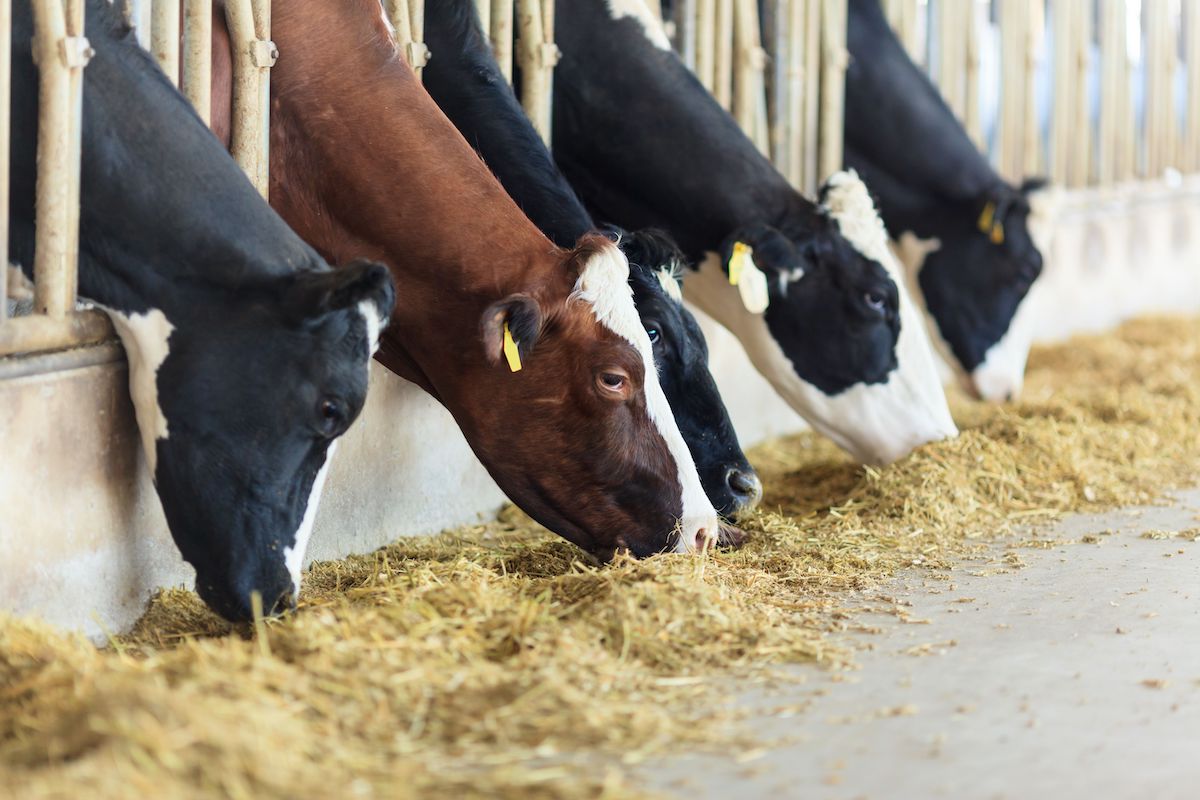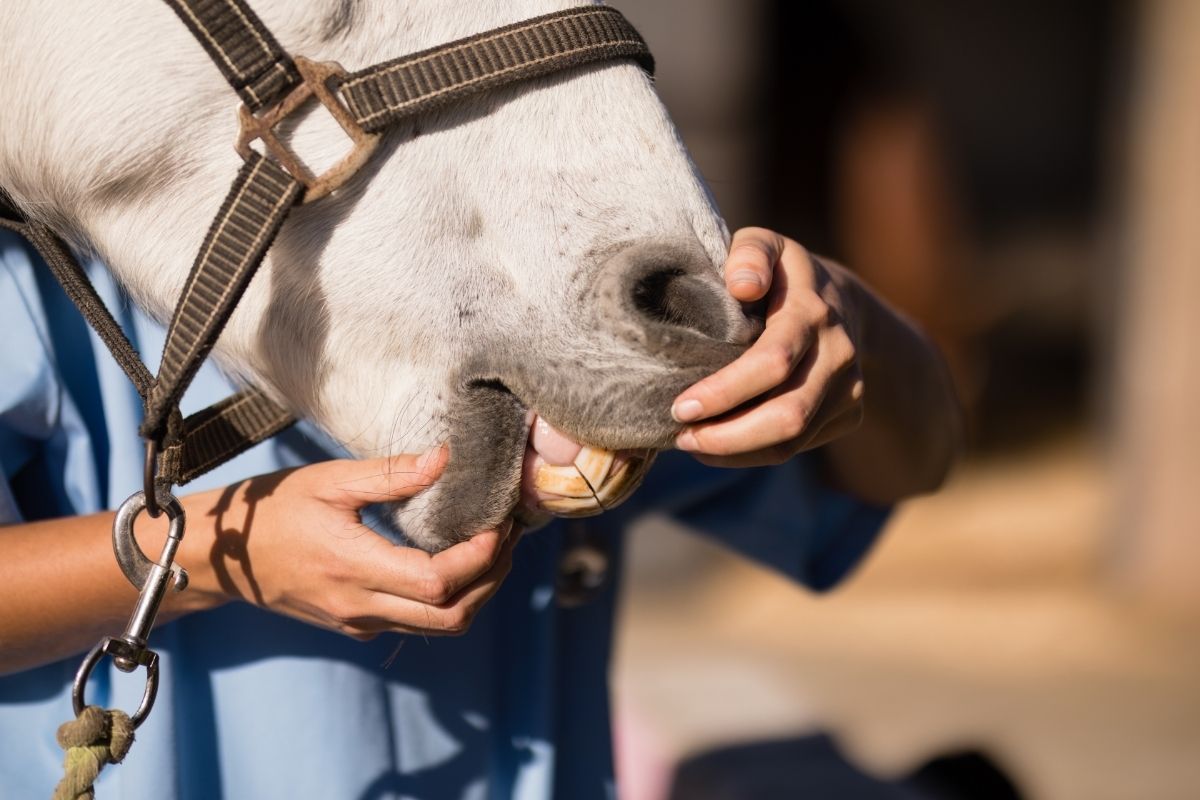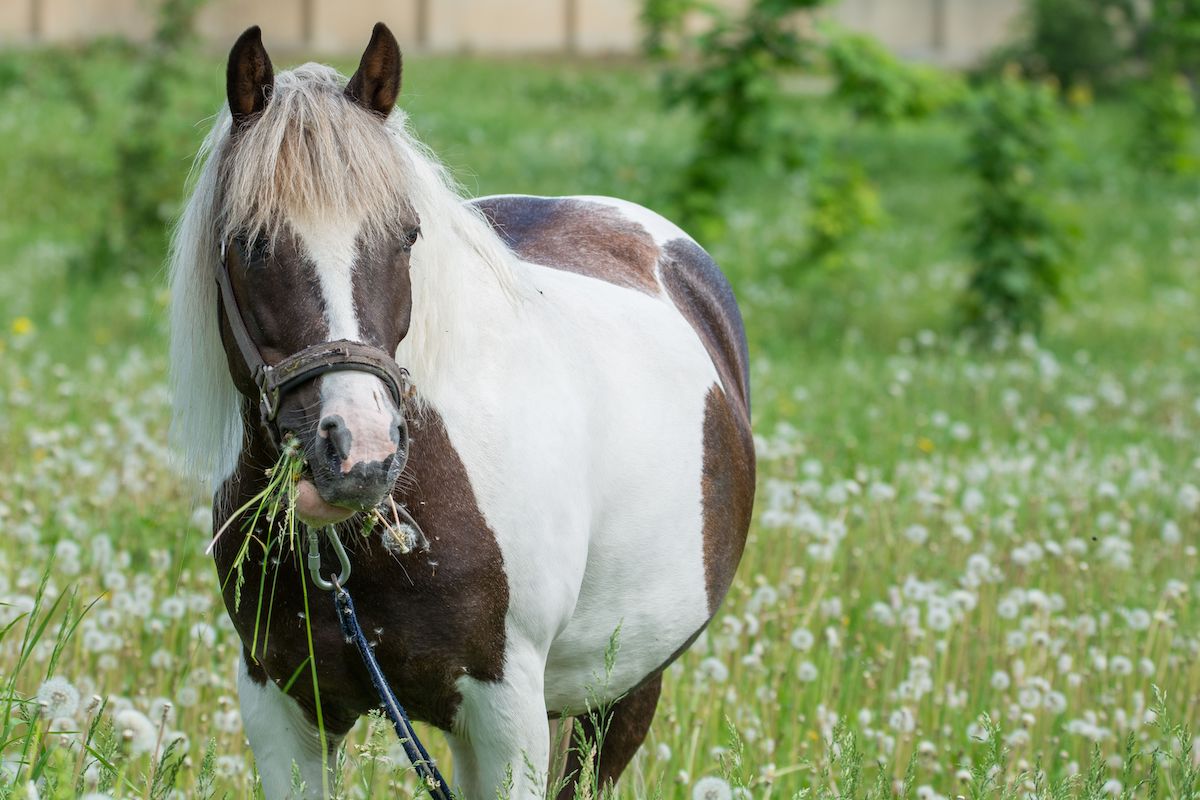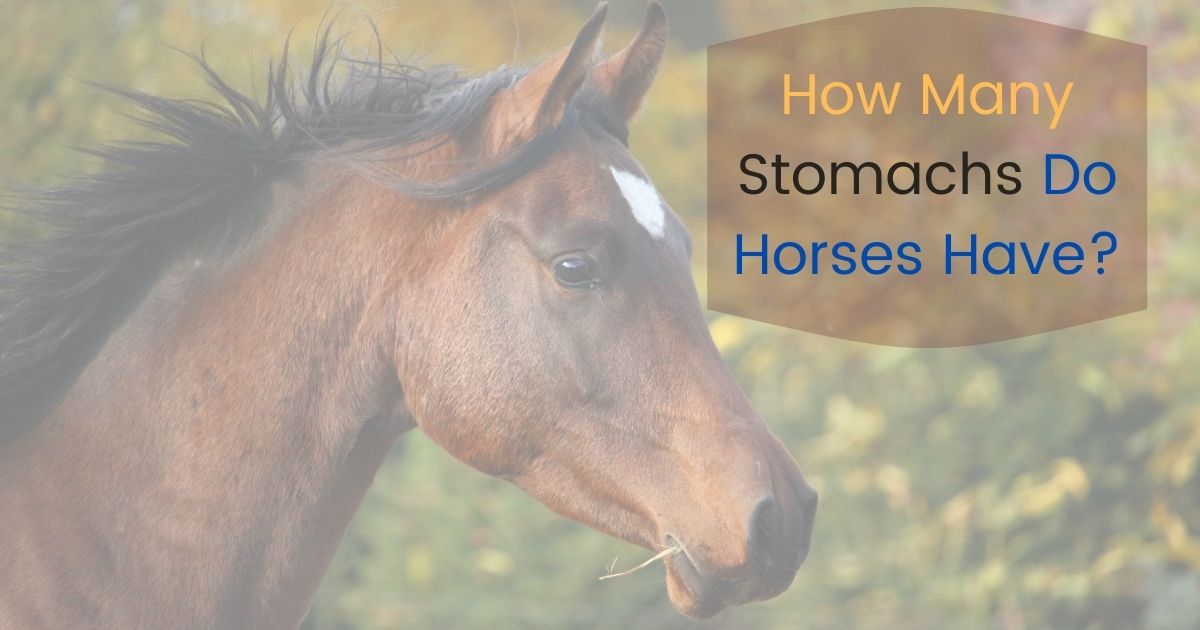Do Horses Have Two Stomachs?
How many stomachs do horses have? This is a query that has persisted in many people’s minds for a while. It is easy to assume that horses fall into the ruminant category because it feeds on grassy forage. So, is this assumption correct?
Well, this comprehensive piece will break everything down for you. So please take your time to go through it blow by blow to get all information concerning the horse stomach anatomy.
Why Should You Not Give Your Horse Cattle Feed?
There are several reasons why you shouldn’t feed your horse with cattle feeds. Here are some notable ones:
Horses have different nutritional requirements than cattle. In this sense, feeds designed for cattle will not meet the specific dietary needs of your horse.
Also, as mentioned earlier, horses and cattle have different digestive systems. For example, the horse stomach is simple and contains digestive enzymes and hydrochloric acid. As a result, enzymatic digestion breaks the food down.
On the other hand, cows’ digestive system works by microbial fermentation. This means that cattle can consume and utilize highly fibrous feedstuffs more efficiently than horses.
Nutritionists also argue that cattle feeds usually contain ingredients that can be unfavorable to horses. For example, some cattle feeds contain ionophores, which are antibiotics that have been confirmed to boost feed efficiency and growth rate in cattle.
It is apparent that when horses ingest ionophores, they can be toxic. For example, they have been found to damage the heart, skeletal muscle, liver, and kidneys. Moreover, such damages could also lead to death.
Additionally, cattle feeds usually contain urea as a source of non-protein nitrogen. Cattle have microbes in the rumens that can take that nitrogen to synthesize protein. Consequently, it becomes available as an additional source of proteins.
On the other hand, horses don’t have a significant amount of microbial population in their stomachs. Therefore, horses don’t utilize urea to form protein. Instead, it is converted to ammonia and absorbed in the small intestine.

Feeding Management Rules for Horses
So, because of the unique equine digestive system, they need a particular feed management program. Here are some essential rules you should consider as you feed your horses.
Quantity
Consider feeding your horse small meals regularly. This approach helps the horse’s digestive tract to work more efficiently. Moreover, it also reduces the risk of digestive disturbances like colic.
Consider your horse’s body weight
Experts advise you avoid feeding your horse with more than around 0.5% of its body weight in grain per meal. For instance, you can use five pounds for a 1,000-pound horse.
When you do this, you will significantly reduce the risk of soluble carbohydrate overload to the hindgut. Alternatively, when feeding your horse with feeds lower in sugars and starch, you are allowed to increase the number of feeds per meal.
Daily feed intake
You should feed at least 0.1% of your horse’s body weight per day in roughage. This translates to around 10 pounds of hay for a horse weighing 1000 pounds. This is because your horse needs enough fiber to maintain a healthy microbial population and hindgut function.
Feed Changes should be gradual
Whenever you want to change the feeding program, you should make it gradual. This is because sudden changes in feed and hay can result in a PH change and shift in the microbial population in the hindgut.
These changes could result in digestive disturbances. To avoid this, consider making minor changes over four days. Additionally, if you are making significant changes, you might have to spread it over several weeks.
Strictly use feeds designed and labeled for horses
Horses have specific nutritional needs which are supplied by specific feeds. Therefore, feeds intended for other species will not meet these specific dietary requirements. Moreover, these feeds might also contain ingredients that are toxic to horses.
Avoid moldy feed or hay
Animal experts have confirmed that horses are usually more sensitive to many substances than other species because of their inability to regurgitate. Moreover, it is critical to maintaining the stability of the microbial population in the horse’s hindgut.
Are Horses Ruminants?
No, horses do not belong to the ruminant animal species. Ruminant animals usually have four compartments in their stomachs. This architecture means that the ruminants digest their food in phases.
On the flip side, horses only have one compartment in their stomach, meaning they don’t fall under the ruminant category. Unfortunately, many people wrongly assume that horses are ruminants simply because they feed on grass.
However, eating grass is not a qualification that makes an animal a ruminant. So, if horses are not ruminants, what are they? Read on to find out!
The Components of The Equine Digestive System
As mentioned earlier, horses are non-ruminant herbivores, meaning they mainly feed on plant material. So, what does the horse digestive system contain?
The horse’s gastrointestinal tract comprises the mouth, esophagus, stomach, and small intestine. It also consists of a highly developed large intestine that includes the horse caecum, large colon, small colon, and rectum.
Mouth
The anatomical features of the horse’s mouth include the tongue, teeth, and salivary glands. When the horse feeds, the digestion process begins with the mouth. Here, the horse chews the food and reduces its particle size. It also mixes it with saliva to kick start the digestive process.
Saliva acts as a lubricant that makes it easy for the food to pass through the esophagus. It also buffers acid in the horse’s stomach. After chewing, the horse swallows the bolus of food, and it moves into the stomach through the esophagus.

Stomach
The horse’s stomach is the smallest part of the digestive tract. Experts suggest that it has a capacity of around four gallons. This makes up around 10% of the entire digestive tract. Moreover, the horse has the smallest stomach compared to the body size of all other domestic animals.
Because of the small stomach capacity, it is recommended to feed your horse with small and frequent meals. The stomach’s primary function is to mix, store, and control food release into the small intestine. Moreover, the horse stomach secrets pepsin that begins the process of protein digestion.
Minimal nutrient absorption takes place in the stomach. From here, the food is released to the small intestine.
Small intestine
The horse stomach anatomy shows that the small intestine is around 70 feet long. This means it comprises 30% of the digestive system. Food passes rapidly through the small intestine, moving at about 1 foot per minute. Studies reveal that it delivers the digesta to the cecum approximately 45 minutes after consumption.
In this sense, the volume of feed a horse consumes, and the passage rate affects digestion and nutrient absorption. For example, if the horse consumes a larger volume of meals, this increases the passage rate, decreasing digestion and absorption.
Most non-structural carbohydrates (starch), fat, and protein are digested by enzymes and absorbed in the small intestine. For example, the amylase enzymes digest starch, while lipase enzymes digest fat in the small intestine. On the other hand, the protease enzymes digest the proteins.
The small intestines and the pancreas produce these enzymes. The enzymes then reduce fats into glycerol and fatty acids, starch to glucose, and protein into amino acids. Moreover, in the small intestine, the digestion of protein and oils is extensive.
But, starch digestion can be incomplete because the coat protects the starch contained in cereal grains on seed grains. Thus, the system delivers starch that is not digested in the small intestine to the hindgut. Here it is fermented by bacteria which leads to the production and accumulation of lactic acid. Consequently, this can cause diseases like colic and metabolic acidosis.
Hindgut
The horse’s hindgut comprises the cecum, large colon, small colon, and rectum. The cecum makes up around 15% of the tract capacity, while the colon accounts for about 50%. The hindgut’s primary function is microbial digestion or fermentation of dietary fiber.
What is dietary fiber? These are structural carbohydrates mainly from forages in the horse’s food. In addition, the fermentation produces volatile fatty acids, which can act as an energy source for the horses that primarily feed on forages.
Fermentation also produces methane, water, and carbon dioxide. It also produces B-vitamins and amino acids. The hindgut also helps in water reabsorption.
- Caecum – this part of the hindgut is similar to the cow’s rumen. It contains microbial that break down food that wasn’t digested in the small intestine, predominantly pasture. The horse caecum has a unique design as its entrance and exit are on the top. Food stays here for around seven hours, allowing the bacteria to start breaking it down.
- Large Colon – the large colon comprises the left and right ventral colons and dorsal colon. Here, fermentation or microbial digestion continues. Most of the nutrients resulting from the fermentation are also absorbed here. Food can stay in this part for up to 65 hours.
- Small Colon, Rectum, and Anus – by the time food reaches the small colon, most nutrients have been digested, and whatever remains is not helpful to the horse. The small intestine’s central role is to reclaim extra moisture and return it to the horse’s body. This process results in fecal balls passed to the rectum and expelled as manure through the horse anus.
What is a Pseudo-Ruminant Digestive System?
Pseudo-ruminant animals usually have three compartments in the stomach. Their stomachs are divided into three sections known as C-1, C-2, and C-3. Section C-1 is similar to the rumen found in ruminant animals.
Additionally, a pseudo-ruminant digestive system processes food just like the ruminant animal. For example, it uses the foregut to process cellulose. The pseudo-ruminant animals also don’t regurgitate their food and rechew like their ruminant counterparts. An example of a pseudo–ruminant animal is the hippopotamus.
How many Stomachs Does a Horse Have?
First, by now, you know the horse is a non – ruminant herbivore. This means that it does not have a multi-compartmentalized stomach. Instead, the horse has a simple stomach that operates much like that of humans.
Moreover, the equine GI anatomy is unique as it digests the food it takes in portions. The digestion process begins in the foregut using enzymes and then the hindgut ferments. So, you can think of the horse digestive system as having two sections.
The first section is much like the pre-caecal digestive system in monogastric animals like pigs and humans. The other section operates more like the rumen of a cow. This unique anatomy affects how the horse feeds, as mentioned earlier in this piece.
Five Interesting Facts About Horse Digestion
It is apparent that the horse is a unique animal, especially when it comes to how it digests food. This unique horse GI tract calls for a better understanding of how the digestive system works. In this regard, here are five fascinating facts that will help you understand horse physiology as far as the digestive system is concerned.
- Horses only chew from one side of their mouth at a time- Horses chew with an up and down motion, just like humans. However, they use an outside-to-inside motion on a slant determined by the angle of the matching surfaces of the upper and lower cheek teeth.
- If you allow your horse to feed on a lot of forage, it can produce up to ten gallons of saliva in a single day. As the horse chews the forage, its salivary glands produce saliva to help moisten the food to make it easy to pass through the esophagus to the stomach. Saliva also helps to neutralize stomach acids reducing the possibility of gastric ulcers.
- The horse’s esophagus works in one direction only. The esophagus empties into the horse’s stomach. Food can only go down, but it cannot come back, meaning horses cannot vomit.
- The horse does not have a gall bladder. In its place, a small part of the small intestine known as the duodenum helps to digest fats.
- When the horse’s stomach is empty, acids can attack the squamous cells in the stomach lining. This attack can lead to ulcers, so horse owners are advised to feed them with small frequent meals. In this regard, you should have access to slow-feed hay net, pasture, or free-choice hay.

Final Thoughts
Horses are not ruminants but can process the same foods as ruminants. This unique feature is due to its digestive system. Moreover, horses don’t regurgitate as the horse esophagus only moves food one way.
It is also clear that horses have one chamber in their stomach. Additionally, although they don’t have four stomachs and cannot regurgitate, they can still digest grass and foliage properly.
So, is all this information necessary? Of course, it is if you want your horse to be healthy and not develop problems associated with taking poor feeds. Therefore, make sure you consider all the horse stomach anatomy details shared here to ensure your horse is happy!
